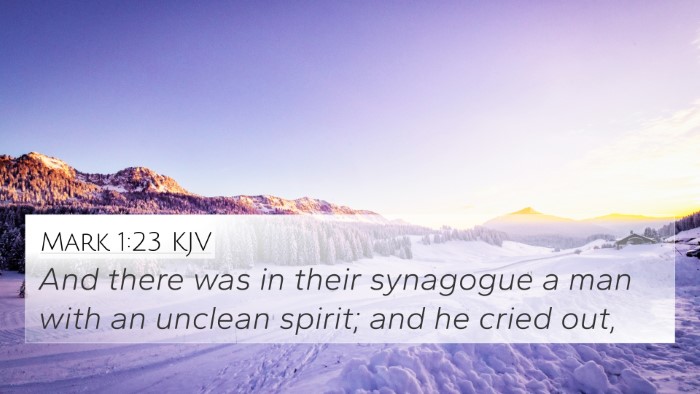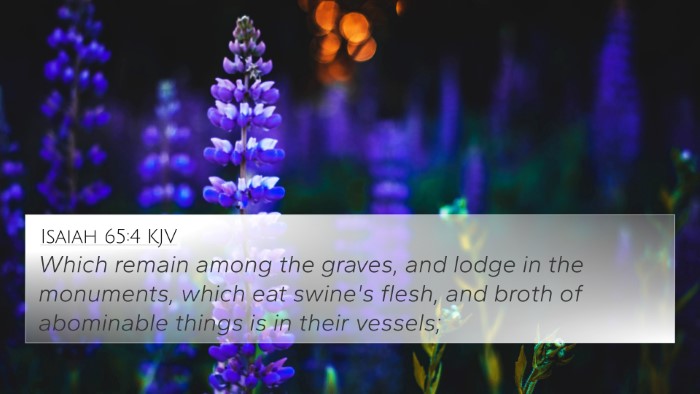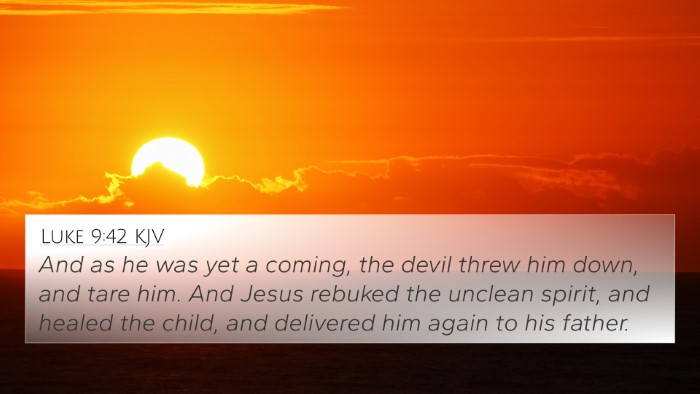Understanding Mark 5:2
Verse: "And when he was come out of the ship, immediately there met him out of the tombs a man with an unclean spirit."
This verse introduces us to a poignant moment in Jesus’ ministry, marked by its dramatic elements. We'll explore its meaning through insights from various public domain commentaries, including those by Matthew Henry, Albert Barnes, and Adam Clarke.
Contextual Analysis
This passage occurs in the Gospel of Mark, which is known for its urgency and focus on the miraculous works of Jesus. Immediately preceding this encounter, Jesus had calmed a storm on the Sea of Galilee, showcasing His authority over nature. Now, He encounters a man possessed by unclean spirits, illuminating themes of spiritual warfare and redemption.
The Nature of the Man with the Unclean Spirit
According to Matthew Henry, the man's condition illustrates the destructive power of sin and demonic influence. He is described as dwelling among the tombs, indicating both physical isolation and spiritual death. This points to a broader truth regarding the impact of sin on the human condition.
Albert Barnes elaborates on the implications of being "unclean." In Jewish tradition, this term signifies not just spiritual impurity but also social ostracism. The man represents those who are marginalized and lost, highlighting Jesus' mission to reach the outcasts and heal their afflictions.
Jesus’ Compassion and Authority
Adam Clarke emphasizes Jesus' willingness to confront evil directly. His arrival signifies hope for the hopeless and healing for the broken. The immediacy of the encounter underscores the urgency of Jesus’ ministry. Unlike others who might shy away, Jesus approaches the situation with authority and compassion.
Cross-Referencing Relevant Bible Verses
The meaning of Mark 5:2 can be further understood by cross-referencing several related verses:
- Matthew 8:28-34: Jesus casts out demons into pigs, illustrating His power over evil spirits.
- Luke 8:26-39: A parallel account of the same event, providing additional details about the man’s condition and Jesus’ command over the adverse forces.
- John 10:10: "The thief comes only to steal and kill and destroy; I came that they may have life and have it abundantly," highlighting Jesus' purpose in contrast to the work of evil.
- Isaiah 61:1: Prophetic declaration that the Messiah would set the captives free, signaling Jesus’ fulfillment of prophetic promises.
- Romans 6:23: Discusses the consequences of sin—spiritual death—reflecting the state of the demon-possessed man before encountering Christ.
- James 4:7: "Submit yourselves therefore to God. Resist the devil, and he will flee from you," illustrating the power believers have over spiritual adversities.
- Mark 16:17: "And these signs shall follow them that believe; In my name shall they cast out devils," indicating the authority given to believers in Christ.
Thematic Connections
The encounters and themes highlighted in Mark 5:2 connect deeply with other scriptures, illustrating the broader narrative of redemption and the power of Christ over evil. Themes of isolation, redemption, and authority provide a rich tapestry of understanding.
- Isolation and Restoration: Jesus’ interaction with the outcast reflects His mission to restore humanity, as seen in Luke 15’s parable of the lost sheep.
- Authority over Evil: This theme recurs in various other Gospels, further establishing the foundational belief in Jesus’ lordship (Philippians 2:9-11).
- Healing and Wholeness: The healing miracles performed by Jesus throughout the Gospels reveal His comprehensive approach to healing—spiritually, mentally, and physically.
Conclusion
The account of the demon-possessed man in Mark 5:2 serves as a critical reminder of Jesus' power and authority over darkness. In the narrative, we see not just a moment of compassion and confrontation but an invitation to recognize that Jesus has the power to heal and restore. By understanding this verse alongside its cross-references, we gain deeper insights into the nature of Christ, the impact of sin, and the profound hope available through faith in Him.
Tools for Further Study
For those looking to delve deeper into the connections between Bible verses, consider utilizing:
- Bible concordance: A useful tool for finding specific words and themes.
- Bible cross-reference guide: A resource to discover verses that enhance understanding.
- Cross-reference Bible study: Methods that enhance comprehension through thematic links.











